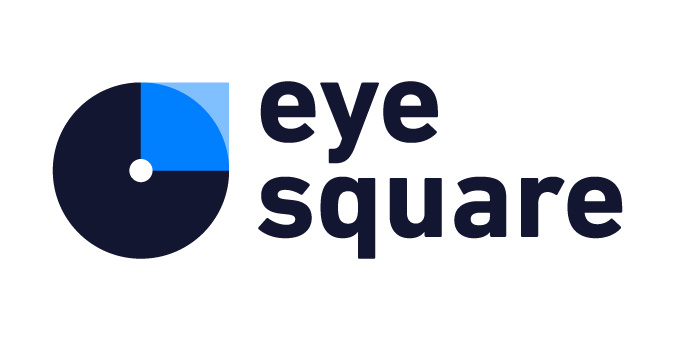11 Apr Newsletter 03 -2016
eye square | official newsletter | March 2016
Dear Sir or Madam,
The eye square team wishes you a happy Easter!
Dear clients, business partners and friends,
We have had a dynamic and eventful year so far. We have received fruitful media resonance regarding our work, which we would like to share with you. In addition, we would like to provide you with a science update and present our three main topics for the year 2016: digital transformation, InContext and joy.
DIGITAL TRANSFORMATION
The reception and communication of brands and products are changing rapidly in the face of digital transformation. In an article for planung & analyse (Sonderheft/2015) Michael Schießl et al. present a tool for 21st century marketing research.
Digital transformation is also changing the consumers’ behaviour in terms of information and shopping. Touch points are evolving and companies are challenged to emotionally amaze customers in a digital environment. Traditional KPIs are insufficient to determine the success of communication within this transformed environment. eye square has developed an integrated research approach to measure the visual and emotional effect of different modes of communication. Through this, eye square helps clients to better understand consumer behaviour in the age of digital transformation.
INCONTEXT
To research effects of advertising, not in an isolated but in a natural media context, allows better predictions about a campaign’s efficiency. As global pioneer and technological forerunner in digital and implicit research we enthusiastically take notice that InContext is establishing itself within day-to-day research.
„eye square – Visual Measurement“ provides us with a research tool, which allows us for the first time to understand how people perceive advertising and brands in their natural media context. Through eye tracking and emotion recognition we track how users react to certain contents, all while users move around their usual media environment. This allows effective campaign testing for classic and digital on stationary and mobile devices. Hence, we supply our clients with reliable data and comprehensive customer insights leading to sustainable business success.
JOY
In times of crises and growing complexity consumers are longing for a new sense of carefreeness, in which life’s burdens are eased in a meaningful way. Consumers want to experience product diversity as true freedom as opposed to a confusing hedonistic oversupply of goods. This quality of life is expressed by joy. Our studies show that to understand purchasing decisions and brand perception the concept of joy will have to be taken into account in the future. Joy is more than just fun – it creates meaning and mental fulfilment. It is becoming increasingly significant when interacting with brands and products.
eye square will further pursue the concept of joy through studies and events. As a start we are investigating the influence of joy on the perception of online advertising.
Current publications
Recently, the work of eye square has been widely covered in the media. Following, an extensive contribution in handelsjournal:
In addition to the oversupply of modern consumer culture, the overload of information at the point of sale is confusing costumers, Michael Schießl stated in the January issue of handelsjournal. Thus, in order to attract the attention of consumers, advertising and product design are equally challenged. For a comprehensive understanding of the highly complex process of purchasing decisions, implicit methods, in addition to the classic survey or focus group, become necessary, since conscious as well as unconscious aspects determine the purchasing decision. With the holistic approach “360 ° Shopper Research” eye square combines explicit and implicit methods, enabling a holistic understanding of shopping situations and purchasing decisions. Detailed 3D visualisations of data from real-store-studies allow further lab research, for instance, optimizing packaging design etc.
In Research & Results Carina de Lopez (UNIT LEAD USER EXPERIENCE) and Selina Langenegger present a case study to optimise patient portals on the internet. Patients now increasingly use websites to inquire about their condition before visiting the doctor. This allows manufacturers to maintain or to strengthen a positive brand image. The emotiveness of a portal is crucial for its acceptance. Content should give patients the feeling of not being alone while also providing coping strategies. Particularly in saturated markets, the concept of joy is a further success factor for a website: One who enjoys an online service will recommend this web site to peers and family.
In Neuromarketing Theory & Practice, 15/2016 Steffen Schmidt (University of Hannover) and Philipp Reiter (PARTNER & COO) look into the complementary potential of neuromarketing and Big Data. Using a user experience study they explain the benefits of advanced data mining methods in the evaluation of implicit user data such as EEG and EDA. The combination of Big Data and neuromarketing promises a deeper understanding of the consumer perspective and thus actionable insights for marketeers.
On marktforschung.de Felix Fischer (UNIT LEAD PROJECT SERVICES) and Gareth Tuck (DIRECTOR UK) illuminate the potential of wearable technology as a tool in market research. Wearables such as smart watches are becoming cheaper and more popular. Even though wearables are not explicitly designed for use in market research studies, they can be used for the analysis of lengths of stay, touch points and eye tracking.
